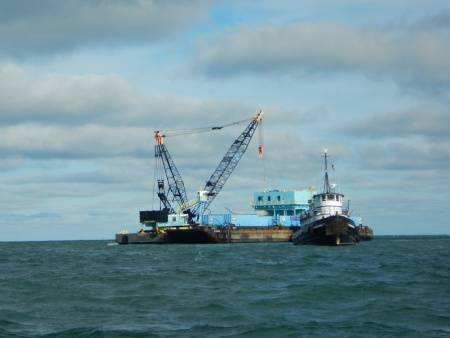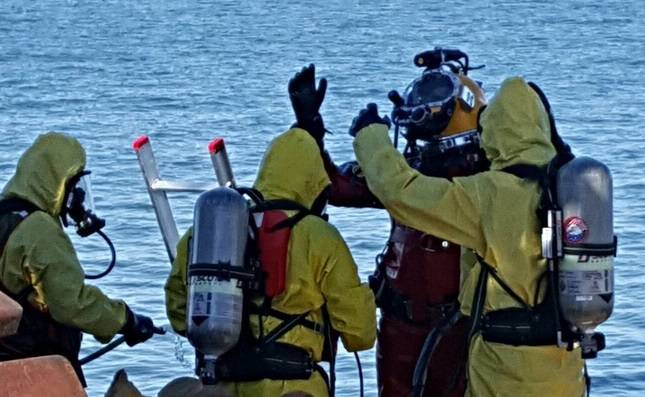The response effort to remove a hazardous cargo from the 104-year-old sunken tank barge Argo in Lake Erie officially ended Monday afternoon with the demobilization of all remaining equipment.
Contracted by the U.S. Coast Guard as part of a Unified Command effort, salvors T&T Salvage recovered the highly toxic cargo from the 1911-built Argo, which sank in 1937 laden with a cargo of benzol that contained a high percentage of the carcinogen benzene. A total of 33,475 gallons of cargo and water mixture were removed from the vessel.
As the only Coast Guard recognized Salvage and Marine Firefighting service provider with a base of operations in the Great Lakes that is also a Coast Guard classified Oil Spill Recovery Organization, T&T said it was selected by the Coast Guard to design a diver directed hot-tapping and pumping system to recover the remaining high benzene cargo from the sunken barge at a depth of approximately 50-feet below the lake’s surface.
Led by T&T’s Great Lakes Response Center, the system included pumping the cargo to a series of storage tanks onboard a barge equipped with designed-for-purpose inert gas and vapor recovery systems to ensure the safety of the public and responders.
Working in a Unified Command that included the Coast Guard, U.S. and Ohio Environmental Protection Agencies and National Oceanic Atmospheric Administration, T&T said it achieved all operational objectives over the course of the project, from safely conducting around-the-clock cold water contaminated water diving operations to collecting environmental and barge hull samples for further analysis.
Shore-side transfer operations began December 8 when cargo mixture was pumped into tank trucks for transfer to a disposal facility. A total of 10 transfers over the course of five days were completed without incident. Following the transfers, the portable tanks were decontaminated December 12.
A total of 13 federal, state, local and Canadian agencies and salvage organizations worked together to remove the product from the 104-year-old vessel.
In all, up to $5.2 million was made available from the Oil Spill Liability Trust Fund and $450,000 from the hazardous material superfund to utilize in clean-up operations, the Coast Guard said. Cost documentation for the response is still being finalized and will be reviewed to ensure proper accountability of all funding used.














